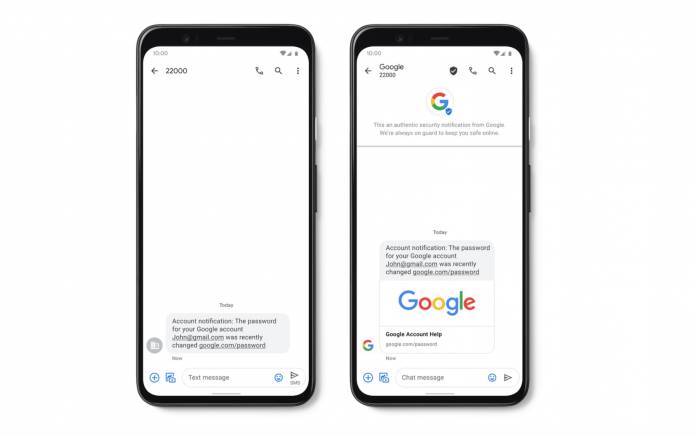
Carriers and OEMs are doing their best to help consumers with all those annoying, disruptive, and sometimes dangerous spam and robocalls. But what about protection from nefarious entities that will use messages to trick you? Android wants to bring a “safer messaging experience” to those using the Messages app and its Rich Communication Services (RCS) through two new things they’re bringing to the fold: Verified SMS and Spam Protection, which will be rolling out or expanding to selected countries for now.
Verified SMS will help users confirm that the message is really coming from a brand or business that you trust. It’s sometimes hard to figure out which ones are legit because the message will come from a “random number. This feature will verify per message that the content is really from a verified business and if they are, you will see the business name, logo, and a verification badge. The messages will not be sent to Google directly, if you’re worried about privacy.
Businesses will have to sign up to be verified. Some of the first brands to avail of this feature are 1-800=Flowers, Banco Bradesco, Kayak, Payback, SoFi, Google Pay India, and even verification codes from Google. It’s rolling out now to nine countries: U.S., India, Mexico, Brazil, the U.K., France, Philippines, Spain and Canada. They will be expanding to other countries soon and hopefully, more businesses will sign up.
The other new feature in Messages is something called Spam Protection which is basically real-time spam detection. You will get a warning when a message is suspected to be spam and if unsafe websites are include in the message. You will also have the option to tell Google if the message is indeed spam or if there has been a mistake and it’s actually from a legit source and carries a legit message.
If it does not have a spam message warning but you know it is actually spam, you can always report it as such and even block the number itself so you won’t get any more future messages. This has actually been available in some countries for the past year but it’s now expanding more broadly to the U.S.









